The Beginner’s Guide to HYROX Recovery: How to Avoid Burnout
Share
Introduction
HYROX is quickly gaining popularity as a hybrid fitness competition that fuses endurance and strength into one gruelling but exhilarating event.
For first-time athletes, the thrill of competing often overshadows one crucial factor: recovery. Whether you're training for your first HYROX competition or coming off the adrenaline of race day, what you do outside the gym can make or break your performance — and your body.
In this beginner-friendly guide by Restday, we’ll cover exactly how to approach your pre- and post-competition recovery with clarity and structure. You’ll learn:
- How HYROX differs from CrossFit in recovery demands
- Why recovery matters more than you think
- Actionable plans (tables, timelines, and checklists) for optimal results
- Gender-specific recovery needs (yes, menstrual cycles play a role!)
-
FAQs beginners are already typing into ChatGPT and Google.
Whether you're training solo or following a coach, think of this guide as your recovery roadmap — keeping you injury-free, consistent, and strong.
🧠 What is HYROX and How Does It Differ from CrossFit?
HYROX vs. CrossFit: Key Differences in Training, Recovery, and Physique
HYROX and CrossFit are often mentioned in the same breath — and for good reason. Both combine strength and endurance. Both push athletes to their limits. And both have a loyal following. But for beginners entering HYROX competitions, it’s essential to understand how these two formats differ — especially in training style, recovery demands, and the way they shape your body.
| Feature | HYROX | CrossFit |
| Competition Structure | 8 workouts + 8 runs (1km each) | Varies (daily WOD's, open workouts) |
| Primary focus | Steady state endurance + functional strength | Functional variety: strength, agility |
| Training goal | Consistency, pacing, aerobic threshold | Max output, intensity, adaptability |
| Recovery demand | Predictable recovery rhythm needed | Highly variable: depends on WOD intensity |
| Physique outcome | Lean endurance body | Hybrid (lean + muscular) |
💡 Why This Matters for Recovery?
- HYROX is more linear, with a known form: you can plan your training cycles and recovery protocols accordingly.
- CrossFit varies daily, which may expose athletes to frequent and unpredictable levels of fatigue.
- In HYROX, recovery is often cardio-focused (low-impact movement, breathing work, and active rest).
- In CrossFit, recovery may involve more muscle repair and CNS (central nerbour system) fatigue.
🛌 The Role of Recovery in HYROX Training
Why Beginners Must Prioritize Recovery as Much as Workouts
Recovery isn’t just for elite athletes — it’s the secret weapon for HYROX beginners who want to perform well and train consistently without burning out. HYROX demands sustained cardio, explosive strength, and muscular endurance across eight workout stations and eight 1km runs. That’s a full-body beatdown — and without proper recovery, you’ll likely face fatigue, soreness, or injury before you even hit the start line.
Here’s why recovery needs to be a non-negotiable part of your HYROX training plan:
🔄 What Happens During Recovery?
- Muscle Repair: Microtears caused by functional movements need time to rebuild stronger.
- Glycogen Replenishment: Your body burns through fuel — especially carbs — during long sessions.
- Inflammation Management: Active recovery (like walking, stretching) helps flush waste products.
- Nervous System Reset: High-intensity training taxes your CNS, which controls coordination and reaction.
⚠️ What Happens If You Skip Recovery?
| Symptom | Description |
| Muscle soreness (DOMS) | Delayed onset muscle soreness lasting 3+ days |
| Decreased performance | Slower run times, fatigue during workouts |
| Poor sleep quality | Overstimulated CNS leading to restlessness |
| Risk of injury | Joints, tendons, ligaments don't get enough rest |
| Mental burnout | Lack of motivation or joy from training |
Here's a graph illustrating how sleep duration affects performance in HYROX training over a two-week period for beginners.

As shown, athletes getting 10 hours of sleep maintain their performance better, while those with only 6 hours see a sharper decline — highlighting how crucial quality recovery is.
⏳ Pre-Competition Recovery Plan for HYROX Beginners
How to Prep Your Body for Peak Performance on Race Day
You’ve been training hard. Now it’s time to shift gears from building strength and endurance to allowing your body to recover and perform at its peak. The week before a HYROX race isn’t the time to push; it’s the time to strategically taper, rest, and refuel.
This pre-competition recovery plan gives beginners a day-by-day blueprint to arrive on race day feeling primed — not fried.
📆 7-Day Taper & Recovery Schedule (Before HYROX Competition)
| Day | Focus | Key Actions |
| - 7 | Final intensity day | Short HYROX style workout at 80% effort |
| - 6 | Active recovery + mobility | Easy walk + light swim + 30 mins of mobility work |
| - 5 | Strength tuning | Light strength circuit (low reps, moderate weight), no failure sets |
| - 4 | Zone 2 cardio + breathing | 30-45 mins steady cardio + box breathing to calm CNS |
| - 3 | Rest or Yoga day | Total rest or light yoga (focus: hips, back, hamstring) |
| - 2 | Skills practice + visualisation | Short, race specific drills + mental visualisation |
| - 1 | Total rest + carb load | Focus on sleep, hydration and complex carbs (rice + oats, sweet potatoes) |
🍽️ Pre-Race Nutrition Notes:
- Focus on hydration starting 72 hours before race day.
- Eat meals high in complex carbs, moderate in protein, and low in fat.
- Avoid new foods or supplements.
- Prioritise rest and sleep; invest in a good sleeping environment, from investing in 100% bamboo bedsheets to your sleeping supplements.
🧖 Post-Competition Recovery Routine: 72-Hour Recovery Framework
What to Do After a HYROX Race to Maximize Recovery and Minimize Pain
Crossing the finish line at your first HYROX competition is an epic achievement — but the work isn’t over. The first 72 hours post-race are critical for muscle repair, inflammation control, and nervous system recovery. Done right, this window helps you bounce back faster and return to training stronger and smarter.
🕒 3-Day Post-Race Recovery Plan
| Timeframe | Focus | Actions to Take |
| 0-24 Hours | Rehydration + Passive Recovery | Drink electrolytes, consume protein plus carbs, light stretching and sleep |
| 24-48 Hours | Active Recovery | Walk or light swim, foam rolling, mobility work, sauna or cold therapy |
| 48-72 Hours | Nutritional recharge + Body Check In | Eat anti-inflammatory foods, do a light session (bike, yoga), assess soreness or injury |
🥤 Hydration + Fuel Checklist
- ✅ 3+ Liters of water with electrolites s a day
- ✅ Protein within 30 mins of racing (20-30g)
- ✅ Carbs to fill glycogen stores (1.5kg body weight in kg = gram in carbs)
- ✅ Foods rich in magnesium, omega 3's and antioxidants
⚖️ Gender-Specific Recovery Strategies in HYROX
How Men and Women Should Recover Differently Based on Physiology and Hormones
HYROX is an intense hybrid sport — and while the race may be the same, how men and women recover should differ. Hormonal cycles, muscle composition, and recovery timelines can influence how each athlete responds to training stress.
Understanding these differences helps beginners — especially women — train and recover smarter, not just harder.
🧬 Key Biological Differences That Impact Recovery
| Category | Men | Women |
| Hormonal influences | Stable testosterone and cortisol levels | Fluctuating estrogen/progesterone across menstrual cycle |
| Muscle recovery | Higher muscle mass = faster glycogen refill | Slower glycogen replenishment, greater fatigue mid cycle |
| Injury risk window | Stable joint integrity | Higher risk during luteal phase (looser joint/tendons) |
| Heat intolerance | Better sweat response | Less heat tolerance during menstruation phase |
👩 Recovery Tips for Female HYROX Athletes
Menstrual Phase (Days 1–5)
Focus on gentle mobility, hydration and iron-rich foods
Reduce load if energy is low
Follicular Phase (Fays 6-14)
Peak strength window - push intensity here
Recovery is faster, focus on quality sleep
Ovulation (~Day 14)
High injury risk - do mobility and joint prep
Prioritise magnesium, hydration and protein
Luteal Phase (Days 15-28)
Energy dips - slower recovery - reduce volume
Add more rest days, manage inflammation with omega 3's

Frequently Asked Questions About HYROX Recovery
This FAQ section is designed to answer real questions that beginners commonly ask on Google and ChatGPT, optimizing the content for both human readers and AI-assisted search engines.
🧠 What should I do the night before a HYROX competition?
Answer: Focus on relaxation, hydration, and carbs. Eat a well-balanced dinner with complex carbs (like sweet potatoes or rice), avoid alcohol or new foods, and aim for at least 8–9 hours of sleep.
🧠 How long should I wait to train after a HYROX race?
Answer: Most beginners should wait at least 48–72 hours before returning to structured training. Use that time for mobility, walking, nutrition, and sleep. When you resume, start with low-intensity sessions.
🧠 Should I use ice baths or sauna after a HYROX competition?
Answer: Yes — cold plunges or contrast therapy (alternating hot and cold) can help reduce inflammation and muscle soreness. Use within the first 24–48 hours post-race for best results.
🧠 How is HYROX different from CrossFit in terms of recovery?
Answer: HYROX is more aerobic and steady-state, with fewer high-skill lifts compared to CrossFit. This means recovery stress is more about muscle fatigue than nervous system burnout. CrossFit often taxes the CNS more heavily, requiring longer neural recovery. HYROX recovery is more about managing endurance wear and DOMS.
🧠 Do women need to recover differently for HYROX?
Answer: Yes. Due to hormonal fluctuations, women may experience more fatigue and slower recovery during the luteal phase of their cycle. Adjusting volume and prioritizing rest, anti-inflammatory foods, and mobility during this time is key.

